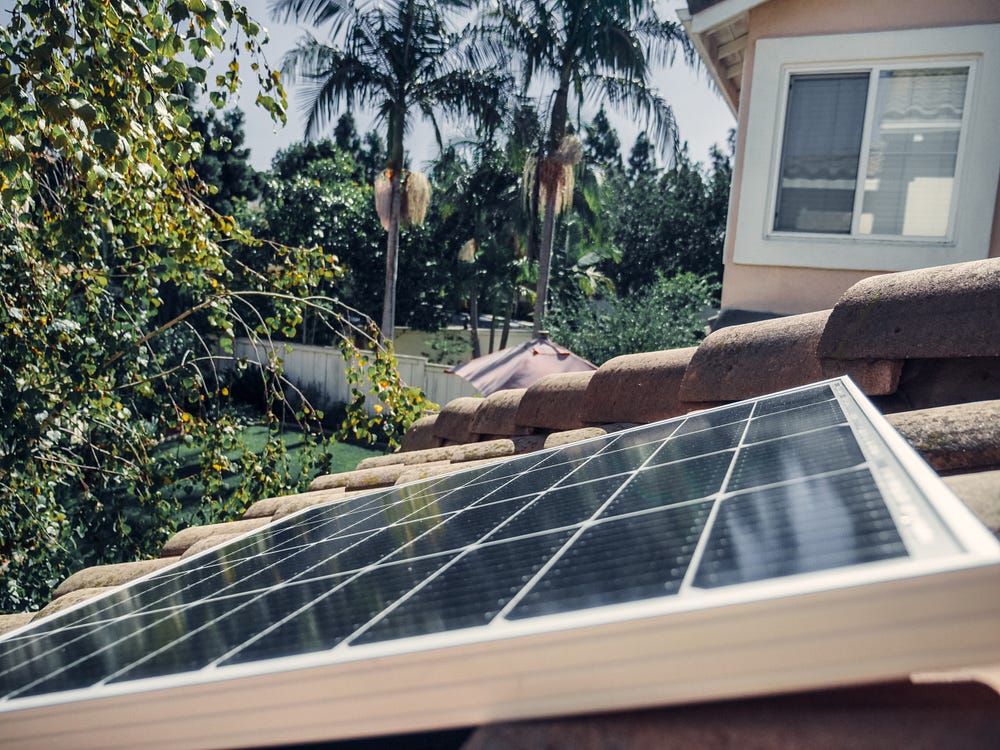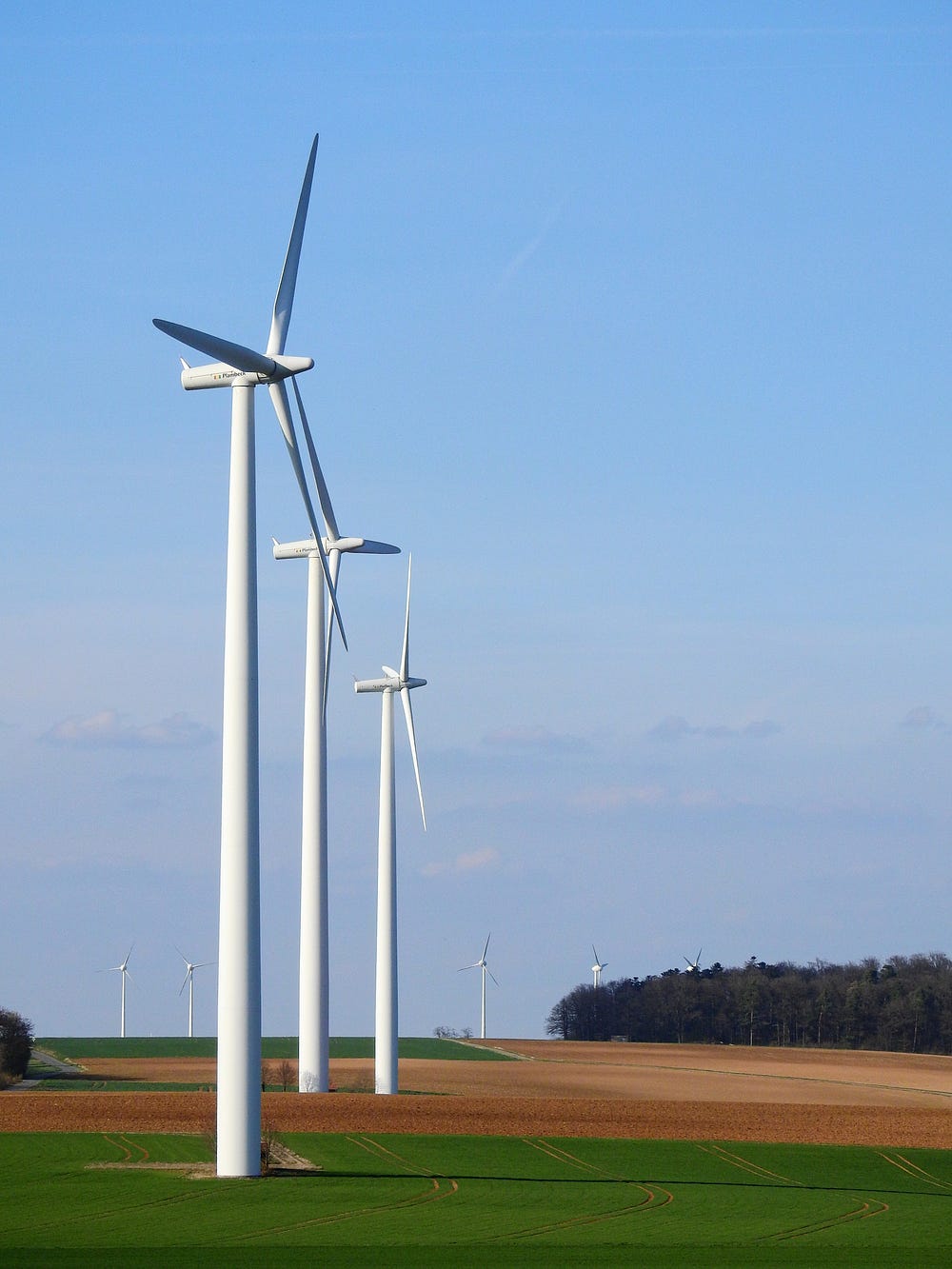The future of energy is now! Discover the potential of renewable energy resources and the solutions they bring. Read on!
Definition of renewable energy resources
Renewable energy resources refer to the clean and sustainable sources of power that are replenished naturally and continuously, such as wind, solar, hydroelectricity, geothermal, tidal energy and biomass. Unlike the conventional fossil fuel-based sources of energy like coal or natural gas which emit toxic pollutants in the environment and contribute to climate change, renewable energy resources do not produce harmful greenhouse gases or cause ecological damage. They provide a reliable and cost-effective alternative to fossil fuels while reducing our dependence on finite resources. Renewable energy technologies have advanced significantly in recent years and have become more efficient, thus increasing their accessibility to meet global demand. Their use has the potential to create new jobs, reduce poverty, promote sustainable development and provide clean electricity for those without access to it. Therefore, investing in renewable energy resources is a key strategy towards achieving a cleaner planet and securing our future.
Benefits of renewable energy resources

Renewable energy sources have numerous benefits compared to traditional fossil fuels consumption. Firstly, they are environmentally friendly and produce no or minimal greenhouse gas emissions which are known to cause deforestation, droughts, heatwaves and disrupt the natural habitats of animals. Secondly, renewable resources such as wind and solar power can be harnessed throughout the year providing a steady supply of electricity without interruption while reducing reliance on importation of oil and gas. Additionally, renewable energy sources also promote job creation in rural areas where solar panels and wind turbines installation projects require a skilled workforce. Furthermore, renewable resources reduce long term electricity costs due to its affordability and widespread availability making it more accessible for businesses and households alike. Considering these advantages renewable resources should be prioritized over non-renewable sources both from an environmental standpoint and for economic reasons as well.
II. Types of Renewable Energy Resources
A. Solar Energy:

Solar energy, also known as photovoltaic solar energy, is an increasingly popular renewable energy source that converts sunlight into usable electricity. It involves the use of solar panels, which consist of multiple silicon cells that capture and convert the sun’s rays into direct current electricity. This electricity can be used to power homes, businesses and even entire cities. One major advantage of solar energy is its environmentally-friendly nature as it emits no pollutants or greenhouse gases during its operation. Additionally, unlike non-renewable sources such as coal or oil, solar energy is virtually unlimited and inexhaustible. While investment in solar may initially require a higher initial cost than traditional forms of power generation methods in some cases, technological advances continue to drive down costs making it a more accessible option than ever before. In conclusion, as our world continues to move towards sustainable solutions and away from fossil fuels, it has become increasingly critical to invest in innovative technologies like solar energy for a brighter future for ourselves and generations yet unborn.
B. Wind Energy:

Wind energy is an increasingly popular source of renewable power that has shown great potential in reducing carbon emissions and addressing climate change. Wind turbines generate electricity by harnessing the kinetic energy of the wind, which turns the blades of a rotor, creating mechanical energy that is then converted to electrical energy. Advances in technology have enabled larger and more efficient turbines that can generate higher yields with less impact on surrounding environments. However, challenges remain, including a need for more widespread infrastructure and transmission grids to connect wind farms to power grids. Further research is also required to address issues such as noise pollution and the impact on wildlife. Nevertheless, wind energy is an important component of a diverse renewable energy mix that can help build sustainable and clean energy futures.
C. Hydropower:

Hydropower, a renewable energy source generated by the force of falling or flowing water, is increasingly recognized as an important alternative to fossil fuels. The technology involves utilizing dams, turbines, and generators to convert the mechanical energy of moving water into electricity. Hydropower plants can operate reliably and efficiently for decades and provide stable power supply that can be quickly ramped up or down in response to demand fluctuations. Furthermore, hydropower facilities offer various ancillary benefits such as flood control, irrigation, and recreation opportunities. However, hydropower does face some challenges such as environmental impacts on river ecosystems due to dam construction and operation. Nevertheless, with advancements in technology and practices such as fish ladders and sediment management systems, hydropower remains a promising means of reducing greenhouse gas emissions while meeting growing energy demands in many parts of the world.
D. Geothermal Energy:

Geothermal energy is a form of renewable energy derived from the earth’s internal heat. It provides a sustainable source of power, reducing dependence on fossil fuels and shortening carbon footprints. Geothermal plants use steam to generate electricity or heat, tapping into the natural resources created by geothermal activity in the earth’s core. With minimal carbon emissions, geothermal energy is also attractive because it is not affected by fluctuations in oil and gas prices, making it an excellent alternative for communities looking for long-term, reliable fuel sources. While initial investments can be expensive, once established geothermal systems can function for decades with minimal maintenance costs. The potential benefits of geothermal energy are boundless, and more research will likely discover new ways to extract and utilize this clean source of power in the future.
III. Challenges
A. Cost
Despite the undeniable advantages of renewable energy sources like wind and solar power, cost remains a significant challenge in their widespread adoption. Building and maintaining renewable infrastructure is still more expensive than conventional methods to produce energy from non-renewable sources like natural gas or coal-fired power plants. Additionally, there are costs associated with the ever-evolving technology required to harness renewable energy effectively. Although the initial investment required for installing equipment has decreased significantly over the years, it is still an obstacle for many companies and individuals. The lack of government subsidies for alternative energy production also contributes to this discrepancy. However, studies have shown that in the long-run, renewable energy sources are often cheaper than fossil fuels because they require no fuel or have significantly lower maintenance requirements. As governments continue to invest in green technologies, it is expected that the costs will decrease making them increasingly accessible to more people globally.
B. Environmental Impact
While renewable energy is generally considered to be cleaner than non-renewable sources, there are still environmental impacts associated with their use. For example, wind turbines can pose a risk to wildlife, and the construction of large solar or wind farms can require significant land use. Renewable projects like wind or solar farms require vast tracts of land and displacement of habitats to make their installation possible. Some energy storage technologies like batteries use metals that are difficult to mine in an environmentally sustainable way. Wind turbines can also kill birds by collision, which could lead to a decline in biodiversity. In addition, the manufacturing process and transportation of components for renewable energy infrastructure carries a carbon footprint, though significantly smaller than fossil fuels. It is important for policymakers and industry leaders to address these challenges effectively by identifying eco-friendly methods of production, optimizing land usage to minimize environmental impacts, and implementing responsible strategies on wildlife conservation.
C. Geographical Limitations
The geographical limitations of renewable energy are one of the most significant challenges that must be overcome to transition to a sustainable future. Renewable energy sources such as wind and solar power are inherently dependent on geographic factors such as location, weather patterns, and climate zone. This dependence creates unique challenges in developing reliable renewable energy infrastructure. For instance, some parts of the world have higher average wind speeds than others, making it more economically feasible to develop wind turbines in those regions. Similarly, areas with higher levels of direct sunlight can generate more solar power than areas without adequate sunlight. Given these limitations, development of regional grids and transmission infrastructure for renewable energy becomes critical to meeting demand while also ensuring stability in the grid system. In short, careful planning and investments required for renewable energy generation systems need to consider unique regional opportunities and limitations for their successful implementation.
Innovative Fuel-Free Generator for Remote Electricity Supply
IV. Government Incentives
A. Tax Credits:
Tax credit incentives for renewable energy resources are financial incentives provided by governments to stimulate the use of renewable sources of energy. These incentives come in the form of tax credits, which reduce the amount of taxes owed by individuals or businesses who invest in renewable energy projects or equipment. Such initiatives provide an economic benefit to business owners and investors while simultaneously promoting a shift towards sustainable energy practices. They allow companies to reduce operating costs associated with traditional fossil fuel-powered energy sources, increase their competitiveness in eco-conscious markets and drive innovation within the renewable energy sector. The ultimate result is a reduction in our reliance on nonrenewable resources and a slowing down of climate change’s impacts on our planet. Tax incentives can be important factors in accelerating the growth and adoption of clean-energy technologies, making them more affordable for households as well as businesses alike.
B. Grants:
Government grant incentives for renewable energy resources have become a fundamental part of the efforts made by numerous governments worldwide to encourage the adoption and use of sustainable sources of energy. These grant incentives are designed to support research, development, deployment, and implementation of renewable energy technologies. The incentives vary from tax credits, rebates, grants and loans that are intended to reduce the initial costs associated with purchasing and installing these new technologies. Governments have realized that renewable energy resources can significantly reduce greenhouse gas emissions while promoting economic growth through job creation in the renewables sector. Renewable energy education is also funded through such programs ensuring future generations are trained as experts in fields such as wind turbine maintenance or solar panel installation. In conclusion, government grant incentives provide an excellent opportunity for businesses or individuals looking to invest in sustainable energy projects while increasing their wealth while promoting environmental protection.
C. Subsidies:
Governments around the world are increasingly providing subsidies for renewable energy resources in order to reduce reliance on fossil fuels and combat climate change. These subsidies aim to incentivize investment in green technologies, such as wind, solar, and hydropower systems, by easing financial burdens associated with their installation and operation. Subsidies for renewable energy may include tax credits, direct cash grants, loan guarantees or feed-in tariffs that pay individuals or companies who generate their electricity through renewables. Critics argue that government incentives distort markets and unfairly benefit certain industries or technologies but advocates claim that they are necessary to speed up the transition to clean energy sources. Ultimately, government subsidies for renewable energy resources will continue to be a topic of debate because of its economic and environmental implications.
V. Conclusion
Renewable energy resources are sources of energy that can be replenished naturally and continuously, providing several benefits including reducing greenhouse gas emissions and creating jobs in the clean energy sector. There are several types of renewable energy, including solar, wind, hydropower, and geothermal energy, each with its own advantages and challenges. While renewable energy can be more expensive and limited by geography, governments can incentivize its use through tax credits, grants, and subsidies.
As individuals, we can support the use of renewable energy by choosing to use it ourselves and encouraging others to do the same. Additionally, we can advocate for policies and regulations that support the development of renewable energy sources and reduce our reliance on non-renewable sources like fossil fuels.
Off The Grid using Earth’s Magnetic Core Energy in 11 days. Click to learn how:
AFFILIATE MARKETING DISCLAIMER: This post contains affiliate links, which means that if you click on one of the product links and make a purchase, I may receive a commission. This commission comes at no additional cost to you. Please note that I only recommend products and services that I have personally used and found valuable. The decision to purchase anything is entirely up to you and any purchases made through these links help support this blog and allow me to continue to create valuable content. Thank you for your support!



No comments:
Post a Comment
Note: Only a member of this blog may post a comment.